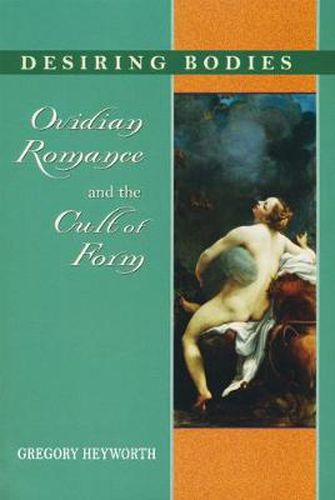Desiring Bodies: Ovidian Romance and the Cult of Form
Gregory Heyworth

Desiring Bodies: Ovidian Romance and the Cult of Form
Gregory Heyworth
Gregory Heyworth’s Desiring Bodies considers the physical body and its relationship to poetic and corporate bodies in the Middle Ages and Renaissance. Beginning in the odd contest between body and form in the first sentence of Ovid’s protean Metamorphoses, Heyworth identifies these concepts as structuring principles of civic and poetic unity and pursues their consequences as refracted through a series of romances, some typical of the genre, some problematically so.
Bodies, in Ovidian romance, are the objects of human desire to possess, to recover, to form, or to violate. Part 1 examines this desire as both a literal and socio-political phenomenon through readings of Marie de France’s Lais, Chretien de Troyes’ Cliges and Perceval, and Chaucer’s Canterbury Tales, texts variously expressing social, economic, and political culture in romance. In part 2, Heyworth is concerned with missing or absent bodies in Petrarch’s Rime sparse, Shakespeare’s Romeo and Juliet, and Milton’s Paradise Lost and the generic rupture they cause in lyric, tragedy, and epic. Throughout, Heyworth draws on social theorists such as Kant, Weber, Simmel, and Elias to explore the connection between social and literary form.
The first comparative, diachronic study of romance form in many years, Desiring Bodies is a persuasive and important cultural history that demonstrates Ovid’s pervasive influence not only on the poetics but on the politics of the medieval and early modern Western tradition.
This item is not currently in-stock. It can be ordered online and is expected to ship in approx 2 weeks
Our stock data is updated periodically, and availability may change throughout the day for in-demand items. Please call the relevant shop for the most current stock information. Prices are subject to change without notice.
Sign in or become a Readings Member to add this title to a wishlist.


